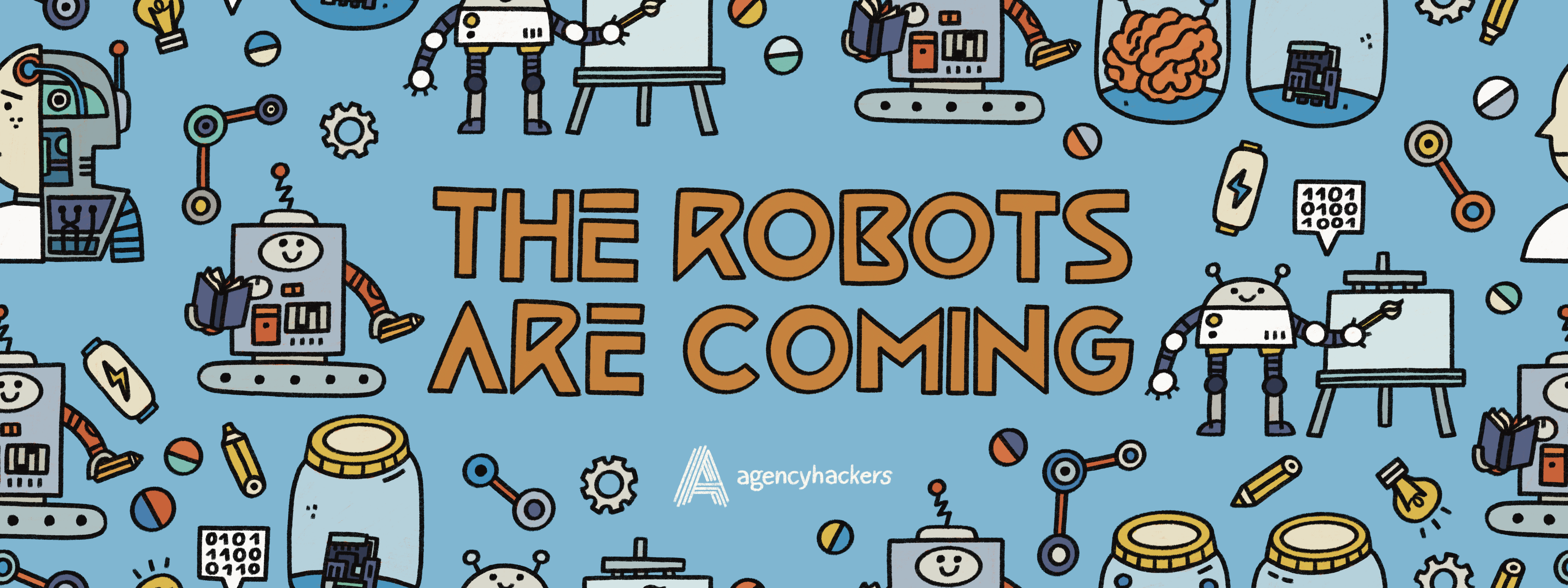Speakers
📢 Here are the current speakers we have for this event. Each of these people will be telling us – and showing us – how they are using AI in their agency today. We will also hear from you – the event is all about taking part.
Using AI to Differentiate Your Agency

Fiona McKenzie knew that to stay innovative, B2B marketers Revere would need to be early adopters of AI.
“The creative team were all excited when we introduced Midjourney. They were all keen to get a login and have a play around with it.”
Coming from one of their regular ‘nimble wisdom’ sessions, the team quickly learned where they could add value to their creative processes and were keen to implement it. And they knew their clients wanted it too.
“The idea of doing something using AI Art excites marketeers. They want to try new stuff. They want to be using new tools and new ways to create content.”
So with their creatives on board, and clients willing to explore AI art as part of their creative concepts, Revere have begun using AI to add to their processes and align with client briefs:
- “We used to spend ages doing a mood board. But now we can create one much more quickly and efficiently by using an AI Art tool – just to get the client a bit of a flavour.”
- “The client loved the fact that as part of their keynote they could say that what they were seeing was part of AI. And that aligned to their business goals of being at the cutting edge of technology.”
With any novelty, there is a risk that people are jumping on the bandwagon – but Fiona doesn’t believe that’s the case with AI.
“It’s not selling it for the sake of selling it. There’s a lot of enthusiasm in the agency and within our creative department about it. So it’s a question of how we sell it, and how we cost it.”
And as quickly as the tech is changing, Revere can see cost and licensing being a future speed bump for agencies and their plans.
“The big conversations we’re having is about what the cost model is going to look like, and how we can make sure we’re not setting false expectations to clients as the value of these tools is recognised.”
Join the team from Revere at The Robots are Coming as they talk through their creative implementation, as well as the key conversations they’re having with clients at this pivotal time for agencies.
Fighting the Fear: How to Embrace the ‘Enemy’ of AI

“It’s scary as a copywriter, because you know that it’s coming for you.”
You might expect content marketers like Charli Hunt, founder of Proof Content, to be worried about the ‘threat’ of AI to writers. Well she’s not…
“I think there’s no point in being scared of something, you might as well embrace it and see how you can use it to your advantage.”
So for Charli, the real question is how AI can be harnessed by writers: “It’s about where it can get you to, and then where you need human creativity.”
And she sees benefits in lots of places:
- AI eliminates the worst fear of a writer: “It’s about not starting a blank page.”
- It’s a helpful editor: “It’s really good at finding an alternative way of saying things.”
- SEO filters are still finding and penalising AI content: “It’s a bot writing for a bot. So it will always need a human touch.”
At this pivotal moment, it’s about navigating the balancing act between technology and humanity; being confident enough to accept the assistance of AI without fear of it replacing you.
“Once I kind of thought about the fact that, actually our job is to just create the best content possible. It doesn’t matter what we use to create that. It’s just about producing the best work you possibly can. And AI does really help.”
“It’s almost like having a little alien friend giving you an outsider’s perspective on things.”
So does AI come in peace? And where should AI end, and the human begin? Find out from Charli at The Robots are Coming…
The Unhinged Creative: Using AI for Ideas and Concepts
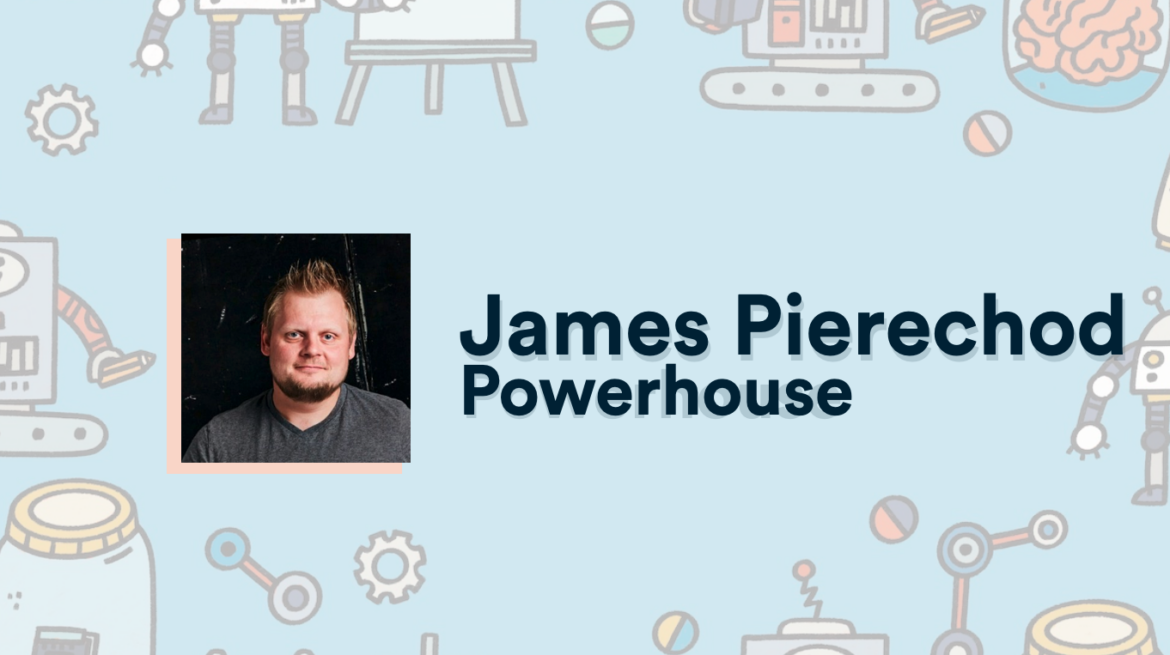
How are agencies using AI day-to-day?
Strategic content agency Powerhouse Studios has been using generative AI for over a year – with live client work.
“AI has always been linked to a commercial endeavour for us. Since we started playing with it, we’ve always asked ourselves: how can we use this in a production environment?”
James Pierechod, head of creative, got into Midjourney in the beta invite phase. “Once I was in, I lost evenings and evenings and evenings. It’s really addictive; if you love to make things. It literally gives you immediate results – so you get addicted to asking for….one more thing…”
He says there’s a huge use-case for AI across the pipeline of marketing and content, from coming up with ideas that humans would miss, to automated huge parts of the post-production process.
“Generative AI is the creative in the room that’s willing to say anything, do anything, and will always give you something. We’re using it as a verbal scamper or starting point – so that the canvas is never blank, and you’ve got a little nugget of an idea to work from.”
James says that the beauty of Midjourney is that it will suggest something you’d never have thought of, but it’s driven by search and contextual datasets.
“We were working on an African coffee brand last year and going into the first ideation session, we had the usual collection of concepts you’d expect – but then I asked the team to individually work in Midjourney and went we reconvened, the ideas, enthusiasm, and energy was totally different. Midjourney revealed that sugar cane was a really popular medium to paint with for the remote African village, and this influence allowed the additional ideas to really spiral from there. It was a very unique and engaging experience.”
“We would never have found that through search or desk research, but generative AI gave us that point of difference we needed.”
2023: The Year of the ‘AI Whisperers‘
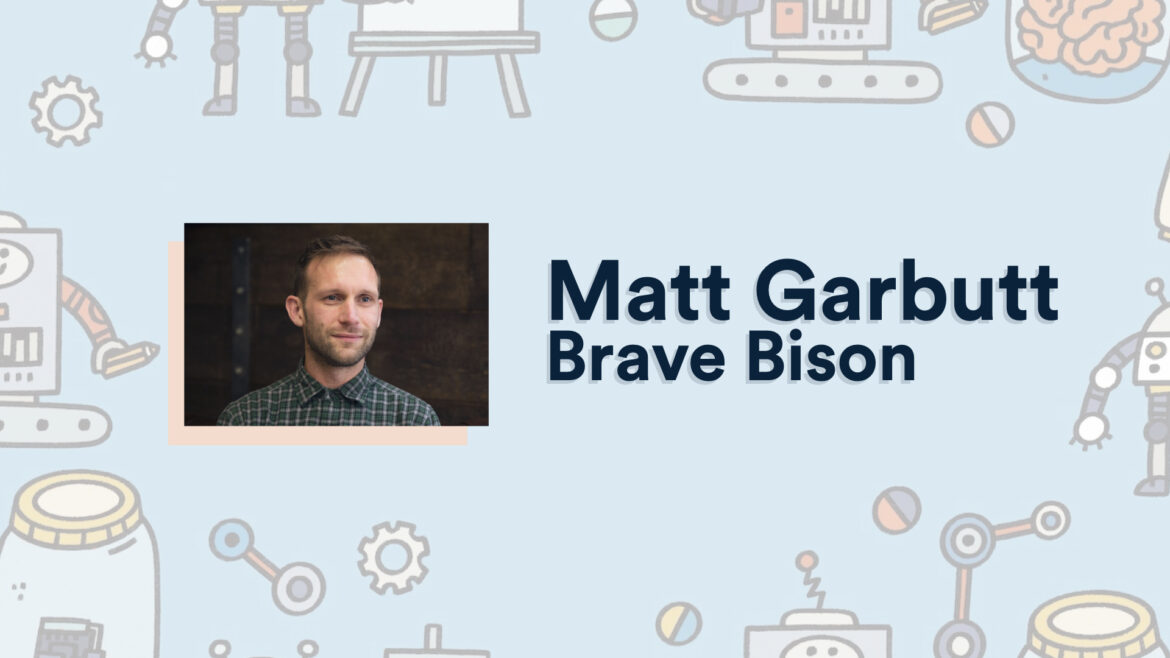
When Matt Garbutt was asked to write a blog for Brave Bison’s blog in October 2022 on the prospect of AI, he felt time was on his side.
“I wrote this blog and I was a bit ‘meh’ about the whole thing! Even though Brave Bison’s special ops team had already developed their own generative AI tool for short and long-form copy, I felt that available AI tooling was missing too much of a human element.”
“It was interesting, but I felt our jobs were safe. And then… the world changed.”
Not long after Matt’s blog, Midjourney released its Version 4 and ChatGPT was unveiled to the world. Everything had changed and within weeks, Matt has now adopted AI heavily into his own workflow and in his latest blog, less than three months later, is in a completely different place.
“I still think this is an augmentation of us, I don’t think it replaces us. But I am extremely open-minded on it now because I feel strongly that if I don’t work with it then I, and by extension we, will very quickly become obsolete.”
And he has a big prediction for this year: ‘AI whisperers’ will be the in-demand skill set.
Why?
- “Getting the results that you’re looking for is not as simple as just typing a random sentence of what you’re after. It will not get you the desired results.”
- “It’s about the constructs, the emphasis and the weighting that you put on different elements of your prompt, and how you construct the design and build your prompts. It’s a case of iterating and developing your prompt to work with the machine to get the picture that you started out with in your head.”
- “People with a creative background will stay, if not ahead of the curve, they’ll certainly be the cream at the top because their visuals will look a lot better than the average users.”
And as Matt says, that means getting on board now or risk being left behind: “I do think that people who are adopting it and starting to work with it – they will be in demand as the curve steepens.”
So how long until that curve steepens? And how much will change in the next three months? Catch up with Matt at The Robots are Coming to find out…
Is There More to AI than ChatGPT?
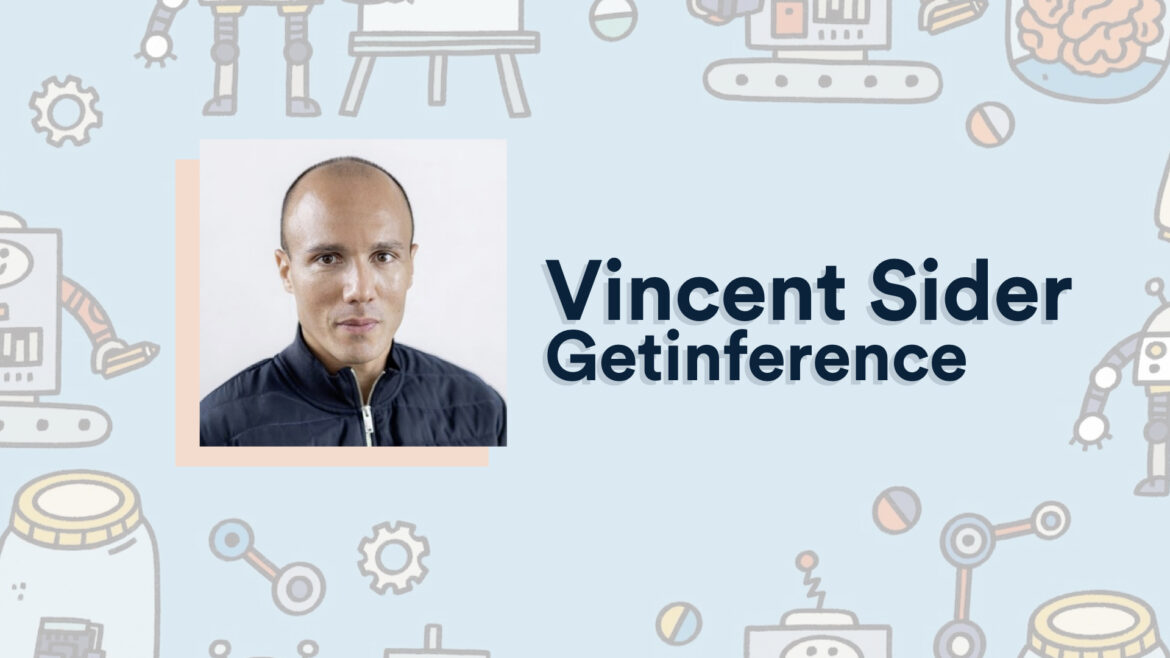
“This is just the tip of the iceberg.”
ChatGPT may have opened the world’s eyes to the potential for AI, but for Vincent Sider we’re simply scratching the surface.
At Getinference, he’s been training more than 500 marketers in AI for over two years and he can see how many are still in the ‘honeymoon phase’ with the technology.
“They think it’s real and fantastic. But right now it’s not. It’s not something you can just copy and paste. It’s credible, but it’s not real.”
For Vincent, it’s about looking below the tip of the iceberg:
- “Below the generative AI buzz, there are four or five foundational techniques that are going to make a significant impact on your business bottom line.”
- “There are also thousands and thousands of AI tools with specific use cases which show the breadth of the categories that AI can impact.”
- “People are in a panic to do something with AI, but my advice is: don’t use AI to fix all of your problems. This is not what AI is designed for. AI is designed to be a laser focus tool. You have a specific use case, and you’re going to fix that with a specific tool.”
Rather than focusing on the tech, Vincent thinks we need to be taking a step back.
“The goal is not to show people the next shiny tool. The goal is to equip you with the language, and the vocabulary. To educate people on these foundations.”
“You need to understand how the machine works, and then you need to trust the machine.”
Join Vincent at The Robots are Coming as he describes the ways that agencies can find the right AI solutions, learn what’s under the hood and, in time, how you can learn to trust it.
Human Curation: What’s Your Role When AI Art Overwhelms?
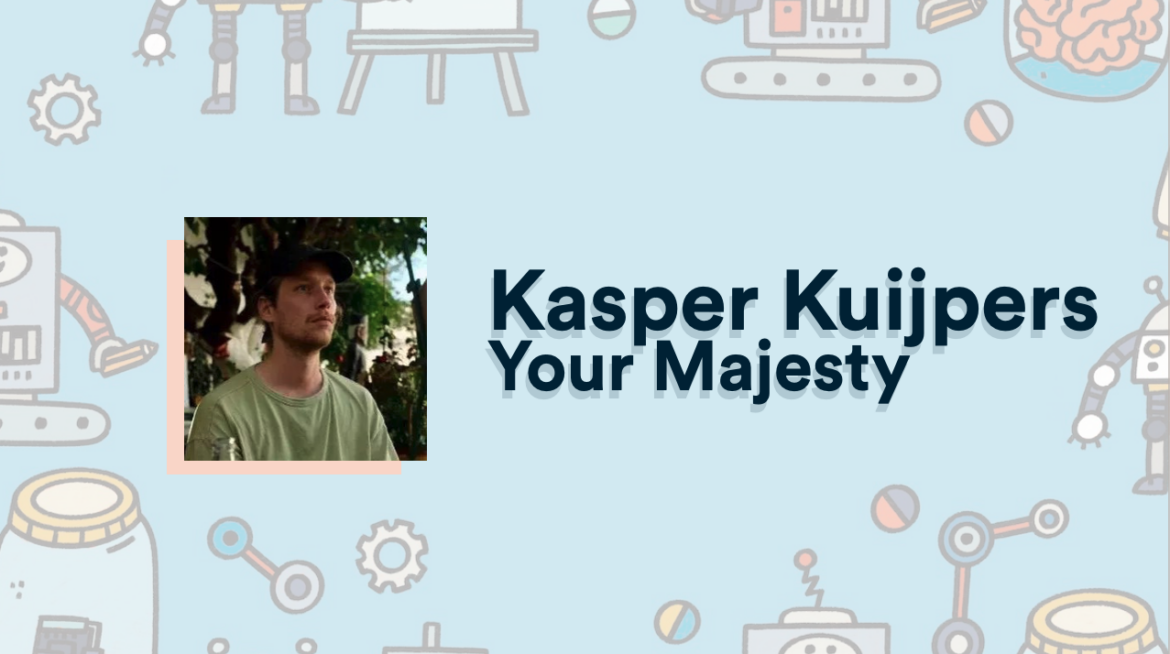
When digital design and brand agency Your Majesty were asked to help launch Armada Music’s 2022 single from Armin Van Buuren, ‘Computers Take Over The World’, AI was undoubtedly the perfect fit.
“They needed campaign assets to cover a bunch of things, and they loved the idea of using AI because it reflected the song,” says co-founder and technical director Kasper Kuijpers.
Armada had a creative team eager to learn about these new tools, and so Kasper and the Your Majesty team created a series of workshops to help them understand the space, what it means to write prompts and how to use them with the different AI tools that are available.
“The first few attempts weren’t great. But that’s part of the process. We started to see some interesting results, we learned from each others prompts and suddenly we found a couple of keywords that really worked.”
But it worked too well.
“It was almost fatiguing because we started getting an endless stream of really nice looking assets,” admits Kasper. “Everyone was excited by these awesome images, but we had to ask ourselves: have we actually found the right thing?”
From years of testing and refining his skills with AI tools, and his experiences working on ‘Computers Take Over The World’, Kasper will explore the evolving creative relationship with AI:
- Things are moving towards curation over creation. You might have 100s of AI images, but how do you find the right one? “It’s going to be more about orchestrating things together.”
- And that’s because the way we create is changing. “We suddenly have a different interaction with our tools, because they can actually react to what you’re doing.”
- AI output isn’t the end of the road; you can edit, add to or even chain AI tools together. “You still have a role as creator in this, it’s just different from before.”
What started out as a music marketing campaign, has formed into probing questions for Kasper and his team about how, and importantly why, the way they create will change because of AI.
So while computers haven’t taken over just yet, join us to hear how that creative relationship is evolving at The Robots are Coming….
